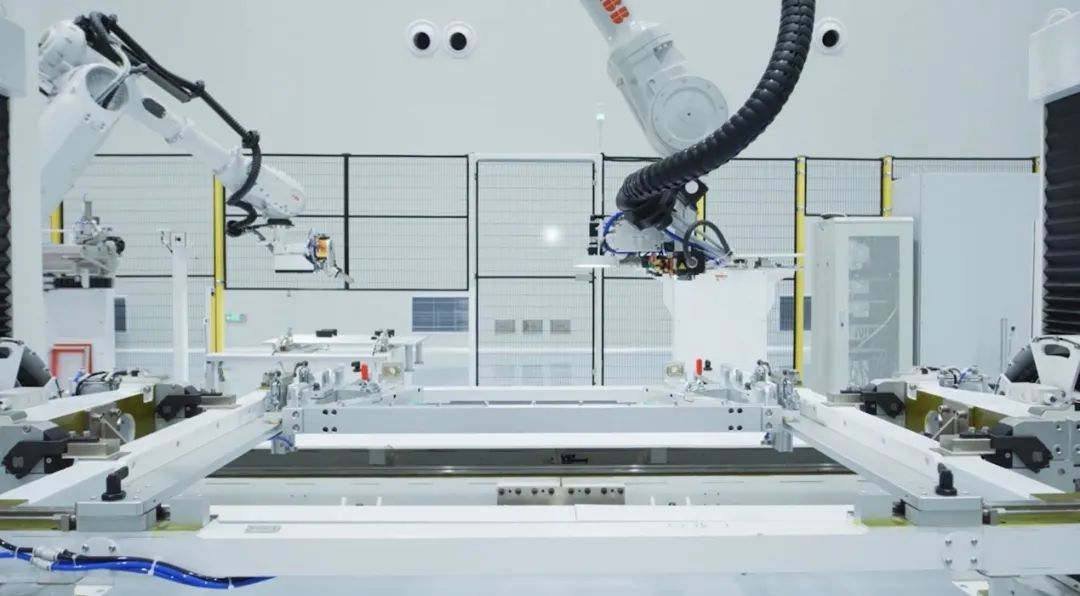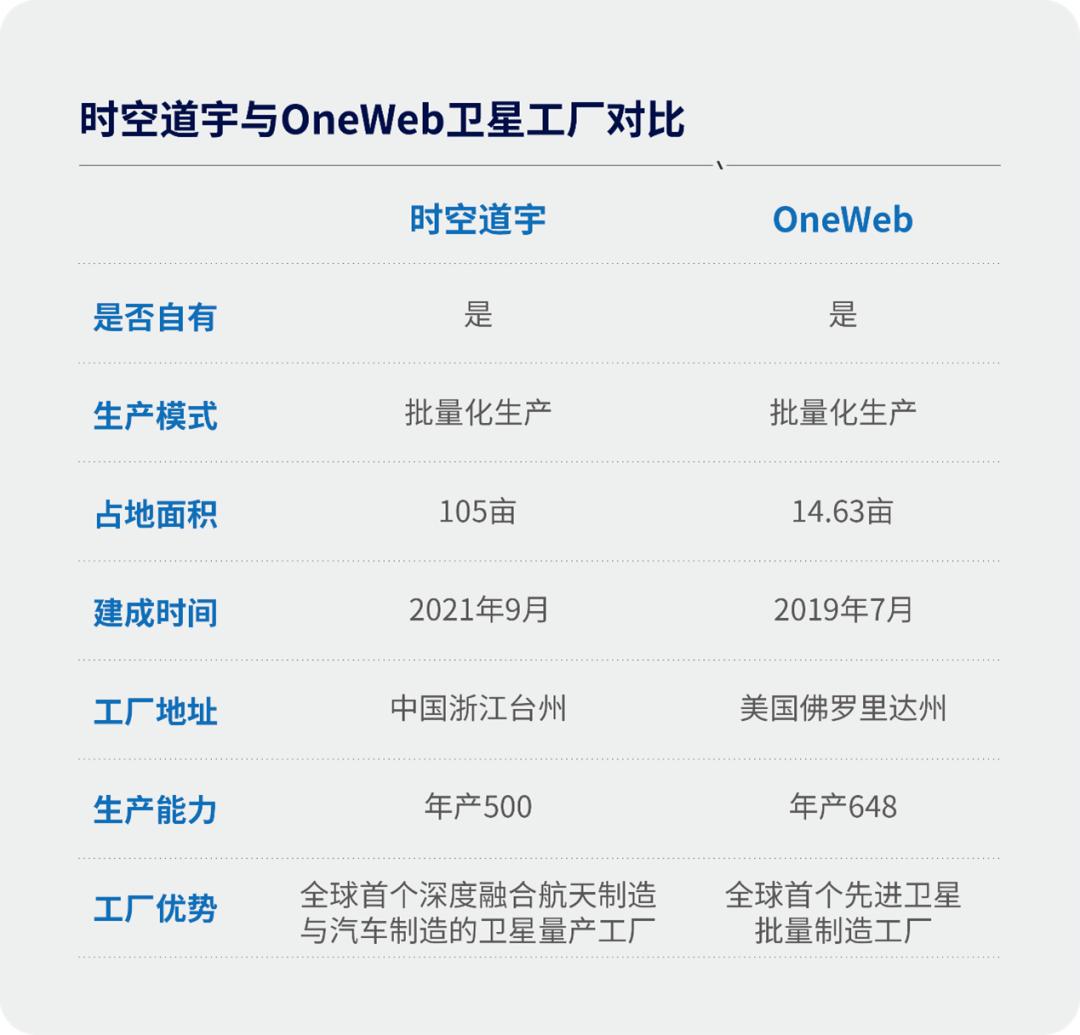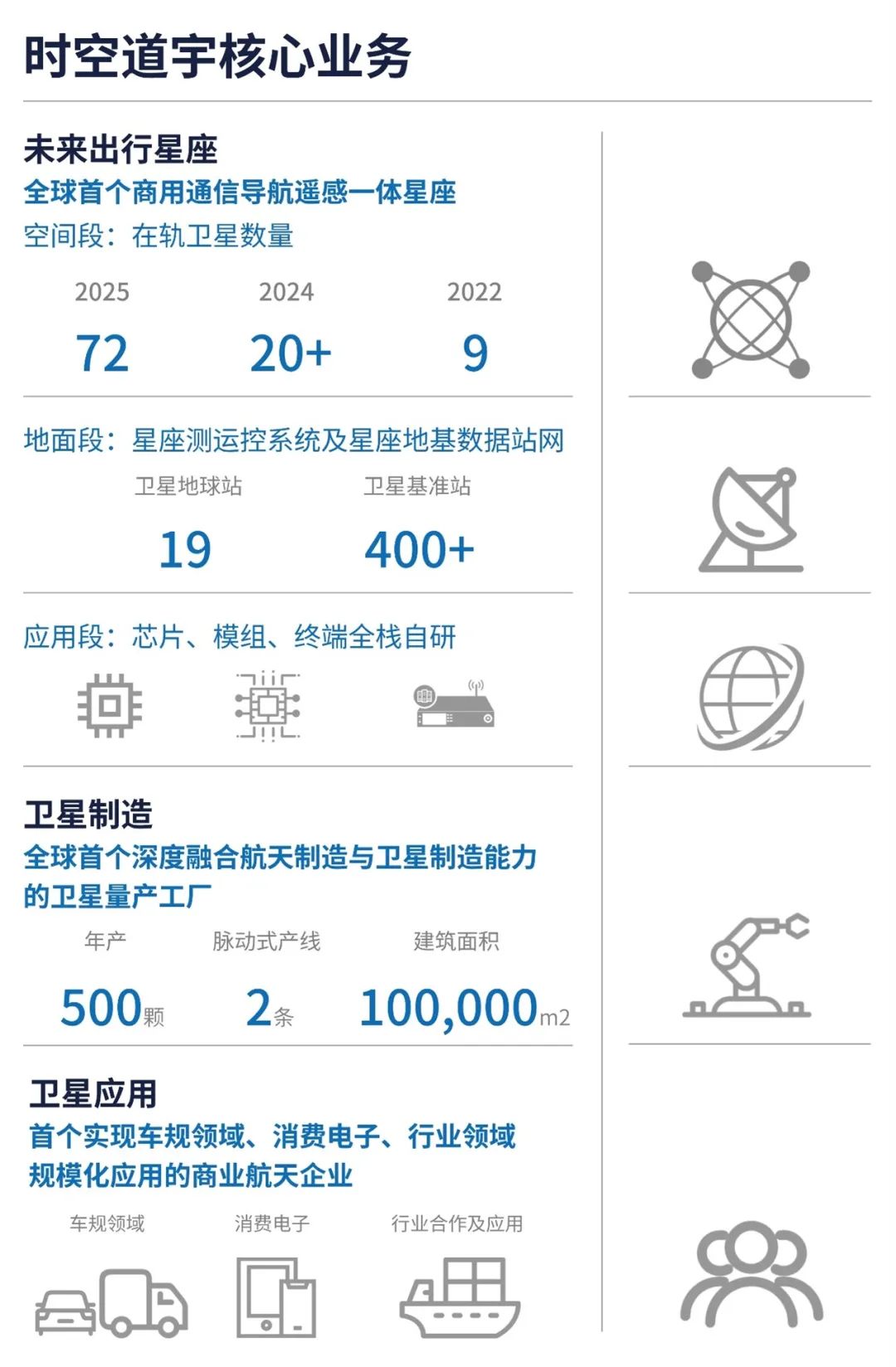Original, Liu Bo, investment community
This is an epic journey to the sea of stars.
Author I Liu Bo
Report I Investment Community PEdaily
The future has arrived.
In December, the Central Economic Work Conference emphasized that next year will focus on promoting high-quality development and leading the construction of a modern industrial system with scientific and technological innovation. The conference pointed out that it is necessary to build a number of strategic emerging industries such as bio-manufacturing, commercial aerospace, and low-altitude economy, and open up new tracks for future industries such as quantum and life sciences.
As a strategic emerging industry, commercial aerospace is becoming increasingly important.
With MIIT’s disclosure, China will accelerate the development and innovation of 6G technology, and achieve commercial use around 2030. This also means that another new node of mobile communication is coming soon. In other words, 6G network will form a fully connected world of ground wireless and satellite communication integration. It is not difficult to find that satellites will play a key role in it, which also gives a number of commercial aerospace companies the opportunity to show their strength. Space-time Daoyu is the leader among them.
What is the origin of Spacetime Daoyu? Established in 2018, Spacetime Daoyu is a technology innovation enterprise under Geely Holding Group. After five years of completing the layout of the whole industrial chain covering satellite research and development, manufacturing, measurement and control, application, etc., Spacetime Daoyu has now become the first commercial aerospace enterprise in China to achieve a commercial closed loop, with a valuation of over 10 billion yuan, ranking among the top echelons of commercial aerospace unicorns.
There has always been a view in the VC/PE circle that the unknown space is the last new continent for mankind. In the words of investors, the Chinese who missed the "era of great navigation" must not miss the upcoming "era of great aerospace". This is a truly epic journey to the sea of stars.
After 10 years of preparation, commercial spaceflight has exploded
Charge out a super unicorn
Looking back at 2014, China’s commercial aerospace industry ushered in an important juncture –
The "Guiding Opinions on Innovating Investment and Financing Mechanisms in Key Areas to Encourage Social Investment" was issued, which clearly stated that "private capital should be encouraged to develop, launch and operate commercial remote sensing satellites, provide market-oriented and professional services; guide private capital to participate in the construction of satellite navigation ground application systems." Since then, China’s commercial aerospace has begun.
Then in 2018, Spacetime Daoyu was established. At that time, Spacetime Daoyu founder and CEO Wang Yang had anticipated that commercial aerospace would become a strategic emerging industry in the information age and an important driving force for the development of global technology and digital economy.
How is the quality of the Space-Time Daoyu team? According to reports, since 2000, there have been no more than 100 important satellite models in China, of which engineers from Space-Time Daoyu have participated in the completion of at least 50 satellites, and each person has complete experience in more than 5 national key satellite models.
But Wang Yang knows that a more important prerequisite than having a strong technical team is to choose the right direction and track. Looking at the commercial satellite industry chain, high thresholds, many links, and strong complexity are significant characteristics. Therefore, start-up companies focus on a certain sub-field, and few have the layout of the whole industry chain, until the emergence of space and time.
Space-Time Daoyu is positioned as a provider of aerospace information and communication infrastructure and application solutions, covering the entire industrial chain from satellite R & D, manufacturing to application. "To use a popular analogy, Huawei provides ground-based information and communication products (ICT), while Space-Time Daoyu provides space-based information and communication products (AICT), both of which are dedicated to technological innovation and commercial applications in the field of human information and communication."
The rapidly rising space-time universe has been recognized by the capital markets in just five years, and it is reported that the latest valuation has exceeded 10 billion yuan. There is no doubt that a commercial aerospace super unicorn is rushing all the way.
Look at the product early, look at the mass production in the long run
At present, satellite commercialization is entering the era of mass delivery.
Let’s take a look at a set of intuitive data – the Blue Book of China’s Aerospace Science and Technology Activities (2022) revealed that in 2022, China completed 64 launch missions and developed and launched 188 spacecraft. At present, there is still a big gap between the number of 2,067 spacecraft launched by the United States in the whole year.
At the same time, industry data show that 100,000 satellites are expected to be deployed in low-Earth orbit in the future, and China has 30,000-40,000 satellites. Under the influence of factors such as the timeliness limit of ITU frequency declaration, the continuous increase of domestic policy support, and the continuous decline in rocket launch costs and satellite manufacturing costs, the manufacturing and launch of low-orbit satellites in our country is expected to enter an "exponential" growth period in the next five years. However, there is still a gap of 90% in the annual production capacity of domestic micro-satellites. Obviously, satellite manufacturing has become a key link in the development of China’s satellite industry chain.
With the inclusion of satellite Internet in the "new infrastructure", satellite manufacturing has been forced to enter the "industrialization" stage. The traditional production model is difficult to meet the huge demand for capacity for rapid networking, and short-cycle, low-cost, and mass production have become the prerequisites for the industry to accelerate.

Spacetime Daoyu Satellite Super Factory Production Line
"Look at the product in the early stage, look at the mass production in the long run", this is a profound lesson left by the development path of new energy vehicles to the market. The reason is not difficult to understand: in the early days of a segment, the product concept and product positioning determine whether it can be successfully launched into the market, and when the product competition gradually intensifies, the mass production speed and mass production capacity determine whether it can solidly occupy the market.
In today’s era of intelligent travel with integrated heaven and earth, commercial satellites are no exception. The last word for success lies in mass production capabilities. However, it should be noted that commercial satellites still face multiple challenges in large-scale manufacturing, including complex technology, high cost, vertical integration of supply chains, and extremely high quality and reliability requirements.
Among them, the cost has become the first question in front of commercial aerospace companies. According to Morgan Stanley estimates, the manufacturing cost of Starlink satellites is 1 million US dollars/piece, and founder Musk has publicly disclosed that the cost of a single satellite can be reduced to 500,000 US dollars. In contrast, according to the Zhejiang Securities Research Report, the average cost of our country’s low-orbit communications satellites is about 30 million yuan, of which labor costs + manufacturing costs account for about 50%.
The "2022 China Commercial Aerospace Industry Investment Report" shows that since 2015, the number of domestic commercial aerospace enterprises that have been registered and effectively operated has reached 433. Obviously, if you want to break through, you have to master the word "cost", and low-cost satellite manufacturing is the top priority.
The key to low-cost and fast mass production lies in: first, modular design, improve versatility and reuse rate, and shorten the delivery cycle of satellites; second, industrial-grade component replacement and core component self-development can reduce satellite manufacturing costs and simplify the development process; third, flexible pulsation production, taking the production of automobiles as an example, flexible production lines can produce both small-size economy cars and large-size luxury cars. The same is true for flexible production satellites, which can enhance the batch production capacity of satellites.
At present, Spacetime Daoyu may be the industry’s breaker. Compared with OneWeb, which is located in the first echelon of the global commercial aerospace industry, it is learning from the Airbus Group’s aircraft production line and assembling production in an assembly line to reduce costs and increase efficiency. Relying on Geely, Spacetime Daoyu was born with automobile manufacturing genes and took the lead in building a satellite super factory. It is the world’s first satellite mass production factory that deeply integrates aerospace manufacturing and automobile manufacturing. Through satellite mass production and intelligent manufacturing, it can help the global constellation network quickly.

It is understood that the Spacetime Daoyu Satellite Super Factory draws on the large-scale mass production manufacturing models such as intelligence and automation in the automotive industry to realize the disruptive innovation of satellite mass production AIT. Through modular design, flexible production, intelligent manufacturing and other technologies, and the use of parallel production in assembly lines, the design and production cycle of satellites can be greatly reduced, while the manufacturing cost of satellites can be greatly reduced.
As a fruitful integration of engineering capabilities in the aerospace and automotive industries, the effect is equally obvious. At present, the factory has broken through the production capacity limit of traditional satellite manufacturing, and can achieve a satellite production cost reduction of about 45% per day, which helps the constellation rapid networking construction. At the same time, by adopting a flexible production method, the factory can flexibly meet the final assembly, integration and testing of satellites of different models and specifications such as communication, navigation, and remote sensing satellites, and meet the needs of different types of constellation rapid networking construction.
With its strong mass production and delivery capabilities, Spacetime Daoyu also successfully fired the first shot of "heaven". In April 2022, Spacetime Daoyu completed the development of the first orbital surface satellite of the low-orbit future travel constellation. And in June of that year, it was successfully launched into orbit with a single arrow of 9 stars at the Xichang Satellite Launch Center, becoming another milestone in the history of China’s commercial satellites.
It is reported that in addition to manufacturing satellites for the future travel constellation of Spacetime Daoyu, its satellite super factory is also providing satellite batch production and one-stop in-orbit delivery services for industry partners, helping to rapidly build China’s satellite constellation and accelerate the rapid development of the satellite industry chain.
Without a doubt, facing the challenge of global satellite large-scale manufacturing, Space-Time Daoyu has already broken the industry boundaries by fully borrowing from the mature mass manufacturing concept of automobiles, thus achieving cost reduction and efficiency increase, and promoting China’s satellite manufacturing into the era of industrialized large-scale production.
Here comes another trillion-dollar race track
As the upstream of the commercial aerospace industry chain, satellite manufacturing will benefit first, and the next stop will definitely return to the "commercial" essence.
According to iiMedia consulting data, since 2015, China’s commercial aerospace market has grown rapidly, with an annual growth rate of more than 20% from 2017 to 2024. At the same time, according to Tabor Think Tank, the size of China’s commercial aerospace market will reach 2.80 trillion yuan by 2025. How can start-up companies get a share of the pie?
As we all know, commercial aerospace is a hard technology. In order to survive and develop, it is necessary to break the tradition and achieve disruptive innovation. And innovation is not only technology, but also business models and mechanisms. Therefore, in addition to building business systems based on satellite constellations, there is a need for practical commercial scenarios, which must be enough to cover the huge constellation construction costs.
More generally, for commercial aerospace, if technology is the foundation, then the construction of the industrial chain and the construction of the business ecosystem are the driving force for the development of the industry. Only when technology and business "walk on two legs" can enterprises go further.
Wang Yang has previously mentioned that the market-oriented mechanism has put forward higher requirements for private commercial aerospace, not only to achieve technological innovation, but also to make aerospace technology serve human production and life, and promote the economic development of human society. "Policies, market demand and other favorable factors are promoting our country’s commercial aerospace from manufacturing-driven to an era of comprehensive application traction."
Looking back at the history of commercial aerospace development, there are many losers. For example, Motorola’s Iridium plan, which lacks a correct judgment of the development potential of mobile communications, has suffered bankruptcy. In addition to Iridium, OneWeb also filed for bankruptcy in 2020 due to the impact of the epidemic on the normal operation of the company, unable to obtain financing. The reason is that due to the lack of large-scale commercial application scenarios, it is difficult to support its huge constellation construction and operating costs.
Because of this, what the Spacetime Daoyu team is doing is a commercial practice, not a scientific engineering experiment. What they want to do is to make the application of aerospace technology more simple and friendly, adapt to user requests, and make products more affordable. To be more straightforward, it is affordable for everyone. To this end, Spacetime Daoyu has made great efforts in satellite applications and has become the first commercial aerospace enterprise in China to achieve commercial closed-loop.
Among the many application scenarios, mobile phone satellite communication is detonating the industry trend. In recent years, Huawei and Apple have launched mobile phones with satellite communication functions. The reason why these consumer products can directly connect to satellites is to conform to the upcoming 6G era. 6G will have a new application scenario of "ubiquitous connection", and satellites will enable mobile communication to truly realize all-terrain and all-space three-dimensional coverage connection. CCTV previously reported that according to incomplete statistics, as of September 2023, the size of our country’s satellite communication market is around 80 billion yuan.
Space-time Dao Yu has also been forward-looking layout.
With its excellent satellite mass manufacturing capabilities, Space-Time Daoyu will have the ability to form network constellations faster than other commercial aerospace companies. They are building the world’s first low-orbit future travel constellation to serve the future travel ecosystem by deploying the whole orbit, and it is the world’s first commercial communication, navigation and remote sensing integrated constellation. The first orbit has been deployed, and nine satellites have been in orbit for more than one year. It plans to launch 02 sets of satellites in the constellation in early 2024 to complete the deployment of the second orbital plane. In 2025, the launch and deployment of 72 satellites in the first phase of the constellation will be completed, providing satellite application services for global users.

In addition, the "Space-Time Daoyu – Peking University Advanced Communication Joint Laboratory" was jointly established with Peking University, and the two sides are committed to conquering the core technology in the future communication field – while the same-frequency full-duplex communication technology. The satellite network is an important part of the future 6G. The two sides will jointly develop full-duplex communication low-orbit satellites, promote the on-orbit verification of this technology, synchronously promote the formulation of industry standards, and accelerate the implementation of industrial applications.
Of course, in the era of intelligent travel with the integration of heaven and earth, the car is the scene that cannot be ignored the most. Space-time Daoyu also gave a bright transcript – it is the first domestic aerospace product to achieve the standard R & D and mass production of vehicles, and the first commercial aerospace company to realize the large-scale application of vehicle satellite communication and high-precision positioning at the same time.

Specifically, Space-Time Daoyu innovatively introduced satellite communication services into new energy mass-produced vehicles, and launched the world’s first mass-produced satellite communication passenger car in conjunction with Polar Krypton to provide two-way satellite messaging and satellite call services. Its satellite-based high-precision positioning service (PPP-RTK) also achieved the world’s first large-scale on-board. During the Hangzhou Asian Games, Space-Time Daoyu provided high-precision positioning, satellite communication, and remote sensing technical support. By equipping nearly 2,000 officially designated vehicles for the Asian Games with Space-Time Daoyu high-precision positioning products and services, it realized accurate vehicle management and scheduling, and the cumulative guarantee mileage exceeded 2.02 million kilometers.
For the space-time universe that aspires to space, the pace of exploration cannot be stopped. Looking to the future, commercial aerospace is a global industry, so domestic commercial aerospace enterprises must take the initiative to go out and improve their international competitiveness. Only in this way can we promote the globalization of China’s commercial aerospace industry.
In fact, many commercial space companies and even countries around the world do not have the ability to independently build satellite constellations and carry out satellite internet services. Therefore, if Chinese commercial space companies can actively expand overseas business by building their own constellations, they will inevitably achieve new business growth.
It will not only provide satellite application data services for SCO countries and countries along the "Belt and Road Initiative", but also cooperate with Malaysian telecom operator Altel to promote high-tech research and development and system application, accelerate the implementation of solutions in smart ports, smart agriculture and other fields, and promote the globalization of satellite applications.
From building its own constellation and ground systems, to mass manufacturing of satellites, large-scale application of satellites, and rapid expansion of overseas markets. The purpose of Space-Time Daoyu is to close the loop of commercial applications in the aerospace industry, from completing the layout of the entire industrial chain to having continuous self-hematopoietic capabilities.
Today, Spacetime Daoyu has formed a R & D system with Shanghai Research Institute as the core and R & D centers in Nanjing, Xi’an and Wuhan as the support; has two business operation headquarters in Guangzhou and Qingdao; established business centers in Beijing and New York; established a satellite super factory in Taizhou, Zhejiang as a satellite manufacturing base; and laid out a global constellation measurement and operation control network. At the same time, we have implemented the global "Belt and Road Initiative" strategy and continued to promote the business implementation of "Belt and Road Initiative" countries and regions such as the Middle East and South East Asia.
Write at the end
Konstantin Tsiolkovsky, the Soviet rocket pioneer, once said: "The earth is the cradle of mankind, but mankind cannot be bound to the cradle forever, but will constantly explore new celestial bodies and spaces, and will begin to carefully penetrate the atmosphere and then conquer the solar system."
Looking back at history, in 1957, the world’s first man-made earth satellite was successfully launched, marking the official start of the human space age; and then in 1970, our country’s first satellite "Dongfanghong No. 1" was launched, playing music in space, and creating countless people’s indelible memories; today, a group of new space blood, like space and time, are still embarking on an unknown journey in the vast universe.
As Wang Yang, CEO of Spacetime Daoyu, said, "Aerospace is the most romantic industry, and it carries the dream of human beings to explore the universe."
The original title: "Trillion Aerospace Runs Out of a Super Unicorn"
Read the original text
关于作者